Estimating the Generation of Discarded Mobile Phones and Highlighting Areas for Recycling Precious Metals from Printed Circuit Boards in Thailand
Abstract
1. Introduction
2. Materials and Methods
2.1. Study Area and Definition
2.2. Objectives
2.3. Estimation of the Discarded Mobile Phone Waste (DMP) Generation in Thailand (2012–2021)
2.3.1. Possible Range for DMP Generation
2.3.2. DMPs Generated per Person
2.3.3. Density Map of DMP Generation in Thailand (2021) by Province
2.4. Estimation of Precious and Toxic Metals in the PCBs from DMPs Generated in Thailand (2021)
2.5. Data Sources
3. Results and Discussion
3.1. Estimation of Discarded Mobile Phone (DMP) Generation
3.1.1. Possible Range of DMP Generation
3.1.2. DMPs Generation Rate per Capita
3.1.3. Percentage of Estimated DMP Generation in Thailand by Area
3.2. DMPs Generation in Thailand (2021) by Province
3.3. Estimation of Recycling and Toxic Metals in the PCBs from DMP Generation in Thailand, 2021
4. Conclusions
Supplementary Materials
Author Contributions
Funding
Institutional Review Board Statement
Informed Consent Statement
Data Availability Statement
Acknowledgments
Conflicts of Interest
Abbreviations
| DMPs | Discarded mobile phones |
| PCBs | Printed circuit boards |
| WEEE | Waste electrical and electronic equipment |
| REEs | Rare earth elements |
| NBTC | National Broadcasting and Telecommunication Commission |
| e-waste | Electronic waste |
| PCD | Pollution control department control |
| EPR | Extended Producer Responsibility |
| GDP | Gross Domestic Product |
Appendix A
| Area | Province |
| Central (25 provinces) | Nonthaburi, Pathum Thani, Samut Prakan, Ang Thong, Chai Nat, Kanchanaburi, Lop buri, Nakorn Pathom, Phetchaburi, Phra Nakhon Si Ayutthaya, Prachuap Khiri Khan, Ratchaburi, Samut Sakorn, Samut Songkhram, Saraburi, Sing Buri, Suphan Buri, Chachoengsao, Chanthaburi, Chonburi, Nakhon Nayok, Prachin Buri, Rayong, Sa Keao, Trat |
| Northeastern (20 provinces) | Amnat Charoen, Bueng Kan, Buri Ram, Chiyaphum, Kalasin, Khon Kaen, Loei, Maha Sarakham, Mukdahan, Nakhon Phanom, Nakhon Ratchasima, Nong Bua Lamphu, Nong Khai, Roi Et, Sakhon Nakhon, Si Sa Ket, Surin, Ubon Ratchathani, Udon Thani, Yasothon |
| Northern (17 provinces) | Chiang Mai, Chiang Rai, Kamphaeng Phet, Lampang, Lamphun, Mae Hong Son, Nakhon Sawan, Nan, Phayao, Phetchabun, Phichit, Phitsanulok, Phrae, Sukhothai, Tak, Uthai Thani, Uttaradit |
| Southern (14 provinces) | Chumpon, Krabi, Nakhon Si Thammarat, Narathiwat, Pattani, Phang Nga, Phatthalung, Phuket, Ranong, Satun, Songkha, Surat Thani, Trang, Yala |
| Bangkok (1 province) | Bangkok |
References
- The World Bank. Mobile Cellular Subscriptions. Available online: https://data.worldbank.org/indicator/IT.CEL.SETS (accessed on 10 April 2022).
- The World Bank. Population, Total. Available online: https://data.worldbank.org/indicator/SP.POP.TOTL (accessed on 10 April 2022).
- The GlobalEconomy.com. Mobile Phone Subscribers, Per 100 People—Country Rankings. Available online: https://www.theglobaleconomy.com/rankings/Mobile_phone_subscribers_per_100_people/South-East-Asia (accessed on 10 April 2022).
- D’Almeida, F.S.; de Carvalho, R.B.; dos Santos, F.S.; de Souza, R.F.M. On the Hibernating Electronic Waste in Rio de Janeiro Higher Education Community: An Assessment of Population Behavior Analysis and Economic Potential. Sustainability 2021, 13, 9181. [Google Scholar] [CrossRef]
- Siddiqua, A.; El Gamal, M.; Kareem Abdul, W.; Mahmoud, L.; Howari, F.M. E-Device Purchase and Disposal Behaviours in the UAE: An Exploratory Study. Sustainability 2022, 14, 4805. [Google Scholar] [CrossRef]
- Attia, Y.; Soori, P.K.; Ghaith, F. Analysis of Households’ E-Waste Awareness, Disposal Behavior, and Estimation of Potential Waste Mobile Phones towards an Effective E-Waste Management System in Dubai. Toxics 2021, 9, 236. [Google Scholar] [CrossRef] [PubMed]
- Ylä-Mella, J.; Keiski, R.L.; Pongrácz, E. End-of-Use vs. End-of-Life: When Do Consumer Electronics Become Waste? Resources 2022, 11, 18. [Google Scholar] [CrossRef]
- Office of The National Broadcasting and Telecommunications Commission. Number of Mobile Phone Imports (Cellular Mobile system) in Thailand from 2009 to 2014. Available online: https://standard1.nbtc.go.th/ (accessed on 11 April 2021). (In Thai)
- The Custom Department. Statistics Report. Available online: https://www.customs.go.th/statistic_report.php?ini_content=statistics_report&ini_menu=nmenu_esevice&left_menu=nmenu_esevice_007&lang=en&left_menu=nmenu_esevice_007 (accessed on 11 April 2022).
- The National Broadcasting and Telecommunications Commission (NBTC). The Checking System for the Approved Telecommunications and Equipment. Available online: http://apps.nbtc.go.th/type_approval/ (accessed on 24 December 2020).
- National Statistical Office. Survey Information and Communication Technology (ICT). Available online: http://www.nso.go.th/sites/2014en/Survey/ICT/Survey%20In%20Household/2021/fullreport_64_q4n.pdf (accessed on 22 June 2022). (In Thai)
- Perez-Belis, V.; Bovea, M.D.; Ibanez-Fores, V. An in-depth literature review of the waste electrical and electronic equipment context: Trends and evolution. Waste Manag. Res. 2015, 33, 3–29. [Google Scholar] [CrossRef]
- Guo, X.; Yan, K. Estimation of obsolete cellular phones generation: A case study of China. Sci Total Env. 2017, 575, 321–329. [Google Scholar] [CrossRef]
- Kim, S.; Oguchi, M.; Yoshida, A.; Terazono, A. Estimating the amount of WEEE generated in South Korea by using the population balance model. Waste Manag. 2013, 33, 474–483. [Google Scholar] [CrossRef]
- Alavi, N.; Shirmardi, M.; Babaei, A.; Takdastan, A.; Bagheri, N. Waste electrical and electronic equipment (WEEE) estimation: A case study of Ahvaz City, Iran. J. Air Waste Manag. Assoc. 2015, 65, 298–305. [Google Scholar] [CrossRef]
- United Nations Institute for Training and Research. The Global E-Waste Monitor 2020. Available online: https://ewastemonitor.info/wp-content/uploads/2020/11/GEM_2020_def_july1_low.pdf (accessed on 6 November 2022).
- Bahaloo-Horeh, N.; Mousavi, S.M.; Baniasadi, M. Use of adapted metal tolerant Aspergillus niger to enhance bioleaching efficiency of valuable metals from spent lithium-ion mobile phone batteries. J. Clean. Prod. 2018, 197, 1546–1557. [Google Scholar] [CrossRef]
- Silveira, A.V.; Fuchs, M.S.; Pinheiro, D.K.; Tanabe, E.H.; Bertuol, D.A. Recovery of indium from LCD screens of discarded cell phones. Waste Manag. 2015, 45, 334–342. [Google Scholar] [CrossRef]
- Arshadi, M.; Mousavi, S.M. Multi-objective optimization of heavy metals bioleaching from discarded mobile phone PCBs: Simultaneous Cu and Ni recovery using Acidithiobacillus ferrooxidans. Sep. Purif. Technol. 2015, 147, 210–219. [Google Scholar] [CrossRef]
- Sahan, M.; Kucuker, M.A.; Demirel, B.; Kuchta, K.; Hursthouse, A. Determination of Metal Content of Waste Mobile Phones and Estimation of Their Recovery Potential in Turkey. Int. J. Env. Res. Public Health 2019, 16, 887. [Google Scholar] [CrossRef]
- Chen, B.; He, J.; Xi, Y.; Zeng, X.; Kaban, I.; Zhao, J.; Hao, H. Liquid-liquid hierarchical separation and metal recycling of waste printed circuit boards. J. Hazard. Mater. 2019, 364, 388–395. [Google Scholar] [CrossRef]
- Hagelüken, C.; Corti, C.W. Recycling of gold from electronics: Cost-effective use through ‘Design for Recycling’. Gold Bull. 2010, 43, 209–220. [Google Scholar] [CrossRef]
- Singh, N.; Duan, H.; Yin, F.; Song, Q.; Li, J. Characterizing the Materials Composition and Recovery Potential from Waste Mobile Phones: A Comparative Evaluation of Cellular and Smart Phones. ACS Sustain. Chem. Eng. 2018, 6, 13016–13024. [Google Scholar] [CrossRef]
- Mohamed Sultan, A.A.; Qi Hang, Y.; Wan Mahmood, W.H.; Md Saad, M.S.; Mativenga, P.T. Critical Materials Determination as a Complement to the Product Recycling Desirability Model for Sustainability in Malaysia. Appl. Sci. 2022, 12, 3456. [Google Scholar] [CrossRef]
- Hibbert, K.; Ogunseitan, O.A. Risks of toxic ash from artisanal mining of discarded cellphones. J. Hazard. Mater. 2014, 278, 1–7. [Google Scholar] [CrossRef]
- Pollution Control Department. Hazardous Waste of Community Situation Report 2021. Available online: https://www.pcd.go.th/publication/25971/ (accessed on 19 June 2022). (In Thai)
- Pollution Control Department. Drafts Open for Public Comment. In The Draft of Waste Electronical and Electronic Equipment Management Act (B.E….). Available online: https://www.pcd.go.th/laws/12907 (accessed on 1 July 2021). (In Thai)
- Pollution Control Department. Draft of Action Plan for Waste Electronical and Electronic Equipment (WEEE) Management (2022–2026). Available online: https://www.pcd.go.th/wp-content/uploads/2021/07/pcdnew-2021-07-19_06-41-36_736367.pdf (accessed on 15 October 2022). (In Thai)
- EnvilianceASIA. Thailand, Draft WEEE Action Plan 2022–2026. Waste Management in Thailand. Available online: https://enviliance.com/regions/southeast-asia/th/th-waste/th-weee (accessed on 15 October 2022).
- Pollution Control Department. Publication: Hazardous Waste of Community Situation Report 2017. Available online: https://www.pcd.go.th/publication/3828 (accessed on 10 September 2021). (In Thai)
- Pollution Control Department. Publication: Thailand State of Pollution Report. 2019. Available online: https://www.pcd.go.th/publication/8013 (accessed on 28 October 2021). (In Thai)
- Pollution Control Department. Publication: Hazardous Waste of Community Situation Report. 2020. Available online: https://www.pcd.go.th/publication/14833/ (accessed on 28 October 2021). (In Thai)
- Araujo, M.G.; Magrini, A.; Mahler, C.F.; Bilitewski, B. A model for estimation of potential generation of waste electrical and electronic equipment in Brazil. Waste Manag. 2012, 32, 335–342. [Google Scholar] [CrossRef]
- Tan, Q.; Dong, Q.; Liu, L.; Song, Q.; Liang, Y.; Li, J. Potential recycling availability and capacity assessment on typical metals in waste mobile phones: A current research study in China. J. Clean. Prod. 2017, 148, 509–517. [Google Scholar] [CrossRef]
- Ruiz Galeano, D.A.; Bautista Rodríguez, S.C. An integrated method of environmental analysis and system dynamics for management of mobile phone waste in Colombia. J. Clean. Prod. 2021, 279, 123768. [Google Scholar] [CrossRef]
- Ikhlayel, M. Differences of methods to estimate generation of waste electrical and electronic equipment for developing countries: Jordan as a case study. Resour. Conserv. Recycl. 2016, 108, 134–139. [Google Scholar] [CrossRef]
- Kunacheva, C.; Labayen, J.; Visvanathan, C. Electrical and electronic waste inventory and management strategies in Bangkok, Thailand. Int. J. Environ. Waste Manag. 2009, 3, 107–119. [Google Scholar] [CrossRef]
- AIS e-waste GREEN NETWORK. Electronic Waste That has been Left, Thai Recycling Operators and A New Beginning Full of Hope. Available online: https://ewastethailand.com/en/electronic-waste-that-has-been-left-en/ (accessed on 5 August 2022).
- Borrirukwisitsak, S.; Khwamsawat, K.; Leewattananukul, S. The use of relative potential risk as a prioritization tool for household WEEE management in Thailand. J. Mater. Cycles Waste Manag. 2021, 23, 480–488. [Google Scholar] [CrossRef]
- Royal Thai Embassy, Washington D.C. Thailand in Brief. Available online: https://thaiembdc.org/about-thailand/thailand-in-brief/ (accessed on 5 September 2022).
- Thailand Board of Investment. Thailand in Brief-Demographic. Available online: https://www.boi.go.th/index.php?page=demographic (accessed on 5 September 2022).
- Gurauskiene, I.; Stasiskiene, Z. Application of material flow analysis to estimate the efficiency of e-waste management systems: The case of Lithuania. Waste Manag Res. 2011, 29, 763–777. [Google Scholar] [CrossRef] [PubMed]
- Duygan, M.; Meylan, G. Strategic management of WEEE in Switzerland—Combining material flow analysis with structural analysis. Resour. Conserv. Recycl. 2015, 103, 98–109. [Google Scholar] [CrossRef]
- Wang, F.; Huisman, J.; Stevels, A.; Baldé, C.P. Enhancing e-waste estimates: Improving data quality by multivariate Input-Output Analysis. Waste Manag. 2013, 33, 2397–2407. [Google Scholar] [CrossRef]
- Office of The National Broadcasting and Telecommunications Commission. Thai Telecom Industry Database-Mobile Subscribers. Available online: https://ttid.nbtc.go.th/mobile_sub (accessed on 7 April 2022).
- Kawai, K.; Tasaki, T. Revisiting estimates of municipal solid waste generation per capita and their reliability. J. Mater. Cycles Waste Manag. 2016, 18, 1–13. [Google Scholar] [CrossRef]
- Makarichi, L.; Techato, K.-A.; Jutidamrongphan, W. Material flow analysis as a support tool for multi-criteria analysis in solid waste management decision-making. Resour. Conserv. Recycl. 2018, 139, 351–365. [Google Scholar] [CrossRef]
- National Statistic Office. Demography Population and Housing Branch. Available online: http://statbbi.nso.go.th/staticreport/page/sector/en/01.aspx (accessed on 20 October 2022).
- National Statistic Office. Revenue and Household Expenditure Branch. Available online: http://statbbi.nso.go.th/staticreport/page/sector/en/08.aspx (accessed on 20 October 2022).
- Oguchi, M.; Murakami, S.; Sakanakura, H.; Kida, A.; Kameya, T. A preliminary categorization of end-of-life electrical and electronic equipment as secondary metal resources. Waste Manag. 2011, 31, 2150–2160. [Google Scholar] [CrossRef]
- Oguchi, M.; Sakanakura, H.; Terazono, A. Toxic metals in WEEE: Characterization and substance flow analysis in waste treatment processes. Sci. Total Environ. 2013, 463, 1124–1132. [Google Scholar] [CrossRef]
- Bruno, M.; Sotera, L.; Fiore, S. Analysis of the influence of mobile phones’ material composition on the economic profitability of their manual dismantling. J. Environ. Manag. 2022, 309, 114677. [Google Scholar] [CrossRef]
- Department of Primary Industries and Mines. Mineral Import of Thailand 2020–2021. Available online: https://www1.dpim.go.th/dt/pper/000001651561227.pdf (accessed on 15 June 2022).
- U.S. Geological Survey. Mineral Commodity Summaries 2022; U.S. Geological Survey: Reston, VA, USA, 2022.
- Camelino, S.; Rao, J.; Padilla, R.L.; Lucci, R. Initial Studies about Gold Leaching from Printed Circuit Boards (PCB’s) of Waste Cell Phones. Procedia Mater. Sci. 2015, 9, 105–112. [Google Scholar] [CrossRef]
- Gupta, N.; Trivedi, A.; Hait, S. Material composition and associated toxicological impact assessment of mobile phones. J. Environ. Chem. Eng. 2021, 9, 104603. [Google Scholar] [CrossRef]
- Anshu, P.; Hait, S. Comprehensive characterization of printed circuit boards of various end-of-life electrical and electronic equipment for beneficiation investigation. Waste Manag. 2018, 75, 103–123. [Google Scholar] [CrossRef]
- The World Bank. Population, Total-China. Available online: https://data.worldbank.org/indicator/SP.POP.TOTL?locations=CN (accessed on 22 October 2022).
- He, P.; Hu, G.; Wang, C.; Hewage, K.; Sadiq, R.; Feng, H. Analyzing present and future availability of critical high-tech minerals in waste cellphones: A case study of India. Waste Manag. 2021, 119, 275–284. [Google Scholar] [CrossRef]
- Thavalingam, V.; Karunasena, G. Mobile phone waste management in developing countries: A case of Sri Lanka. Resour. Conserv. Recycl. 2016, 109, 34–43. [Google Scholar] [CrossRef]
- Counterpoint. Thailand Smartphone Market to Decline Amidst COVID-19 Pandemic: Present Scenario and Outlook. Available online: https://www.counterpointresearch.com/thailand-smartphone-market-to-decline-amidst-covid-19-pandemic-present-scenario-and-outlook/ (accessed on 9 September 2022).
- The World Bank. GDP Growth (Annual%)-Thailand. Available online: https://data.worldbank.org/indicator/NY.GDP.MKTP.KD.ZG?end=2021&locations=TH&start=2016 (accessed on 8 September 2022).
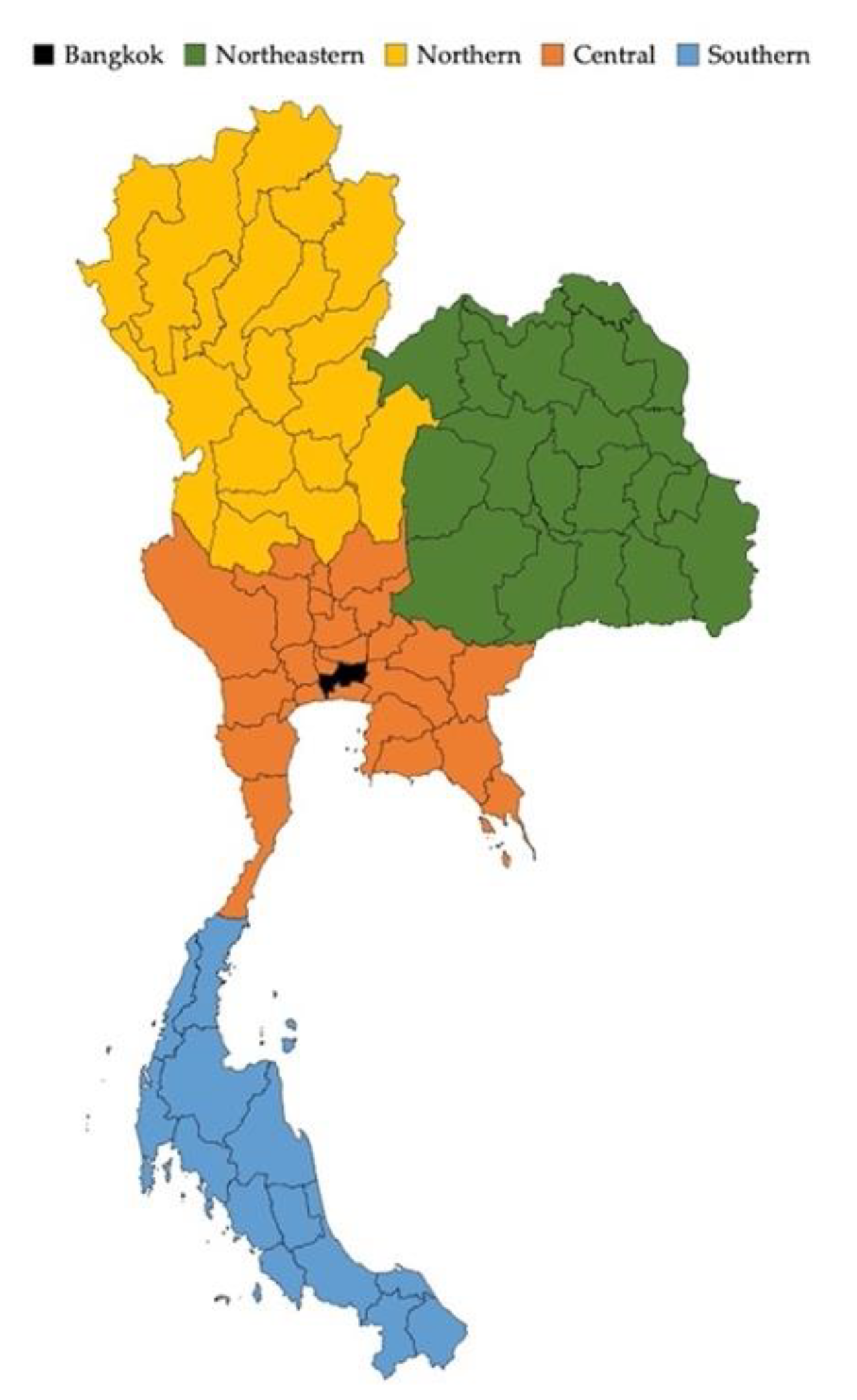
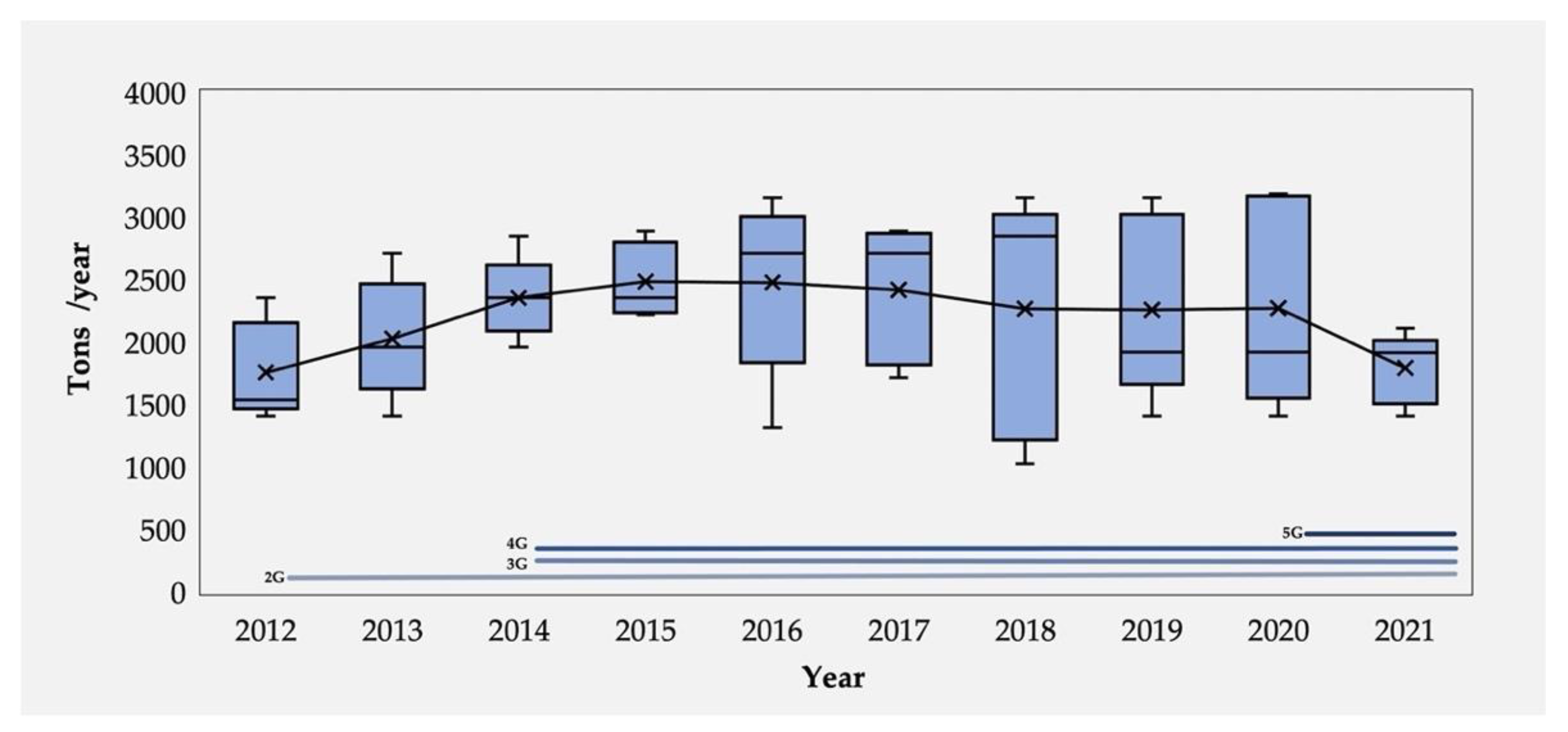
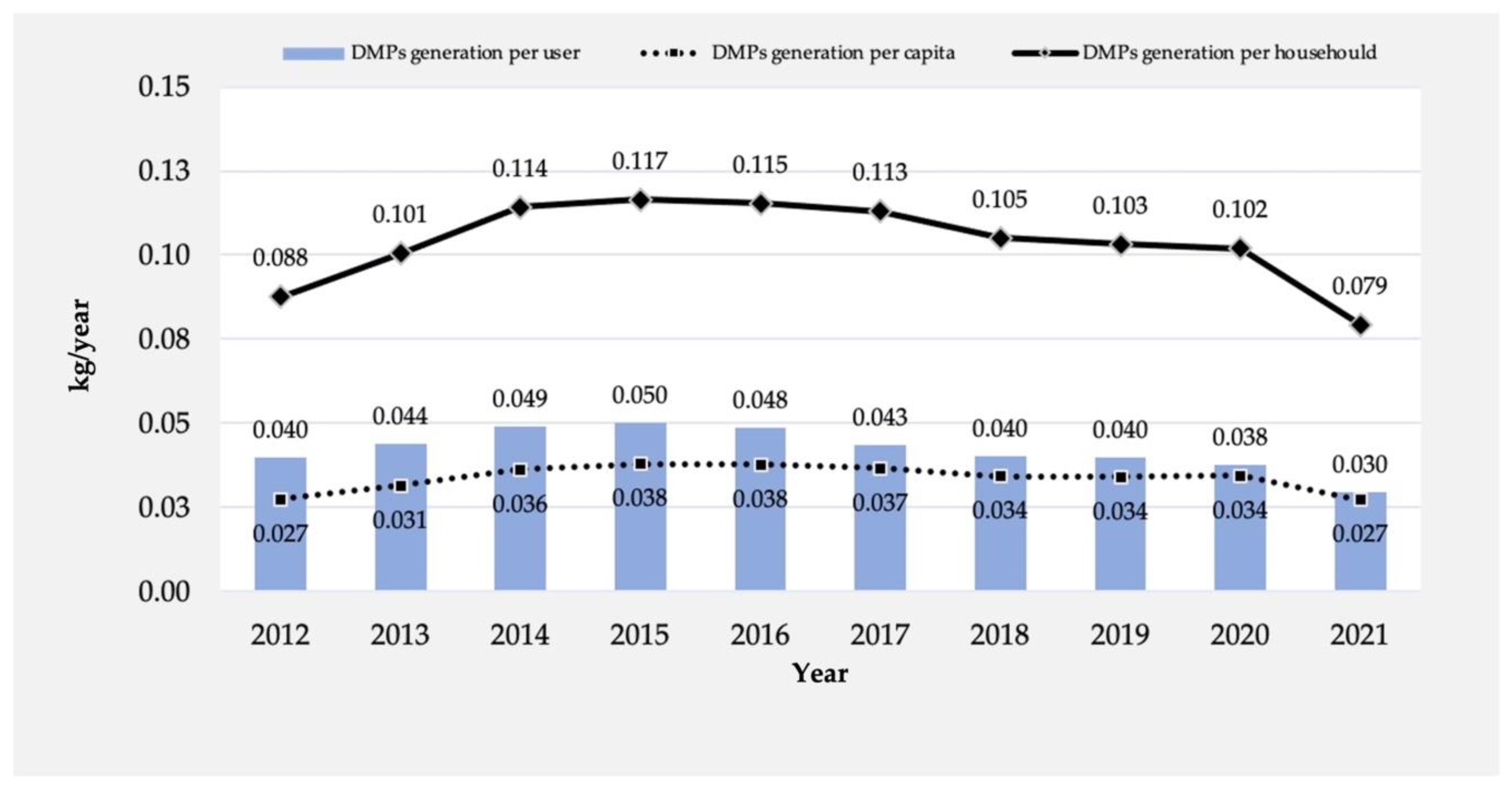
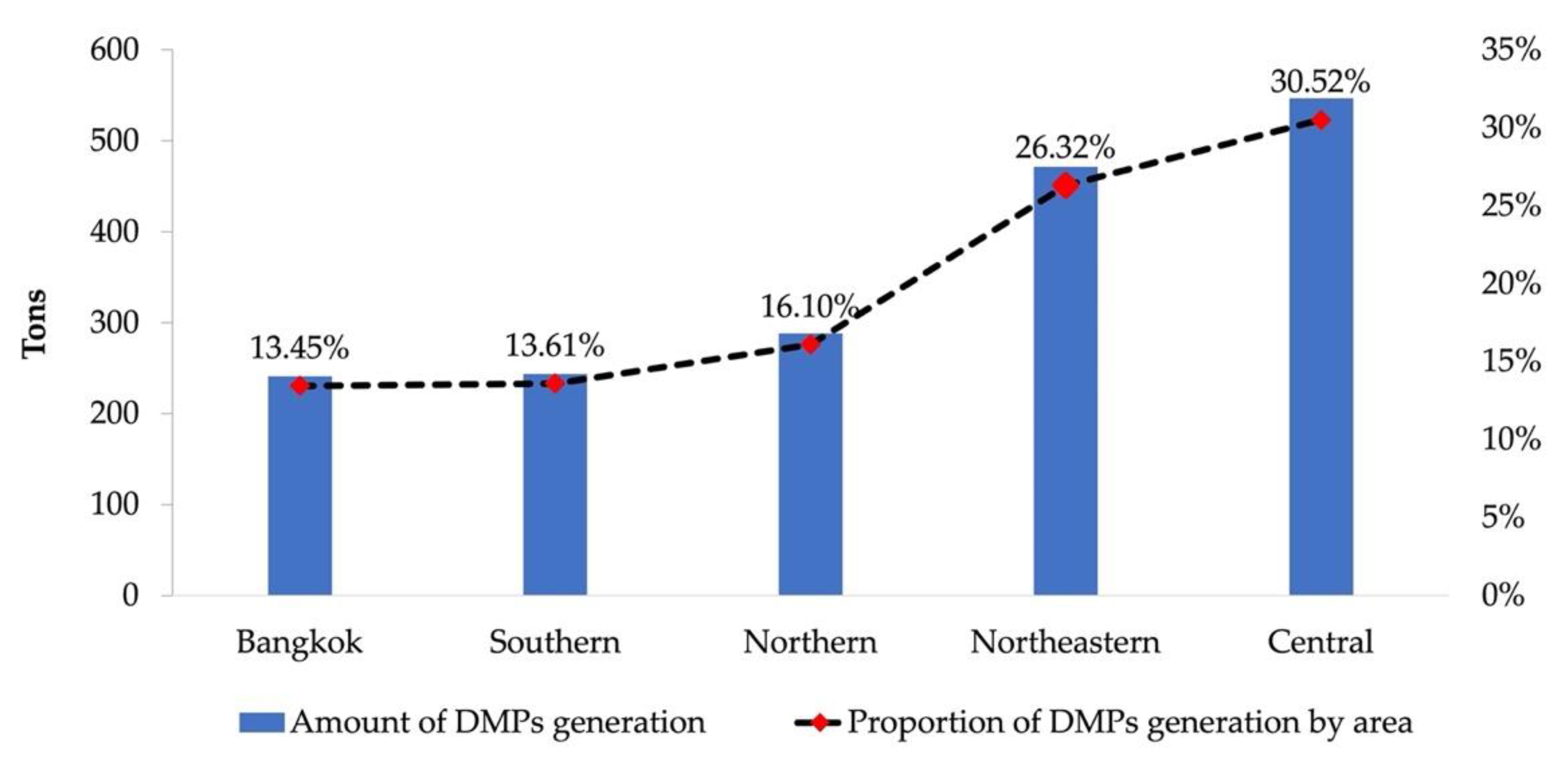
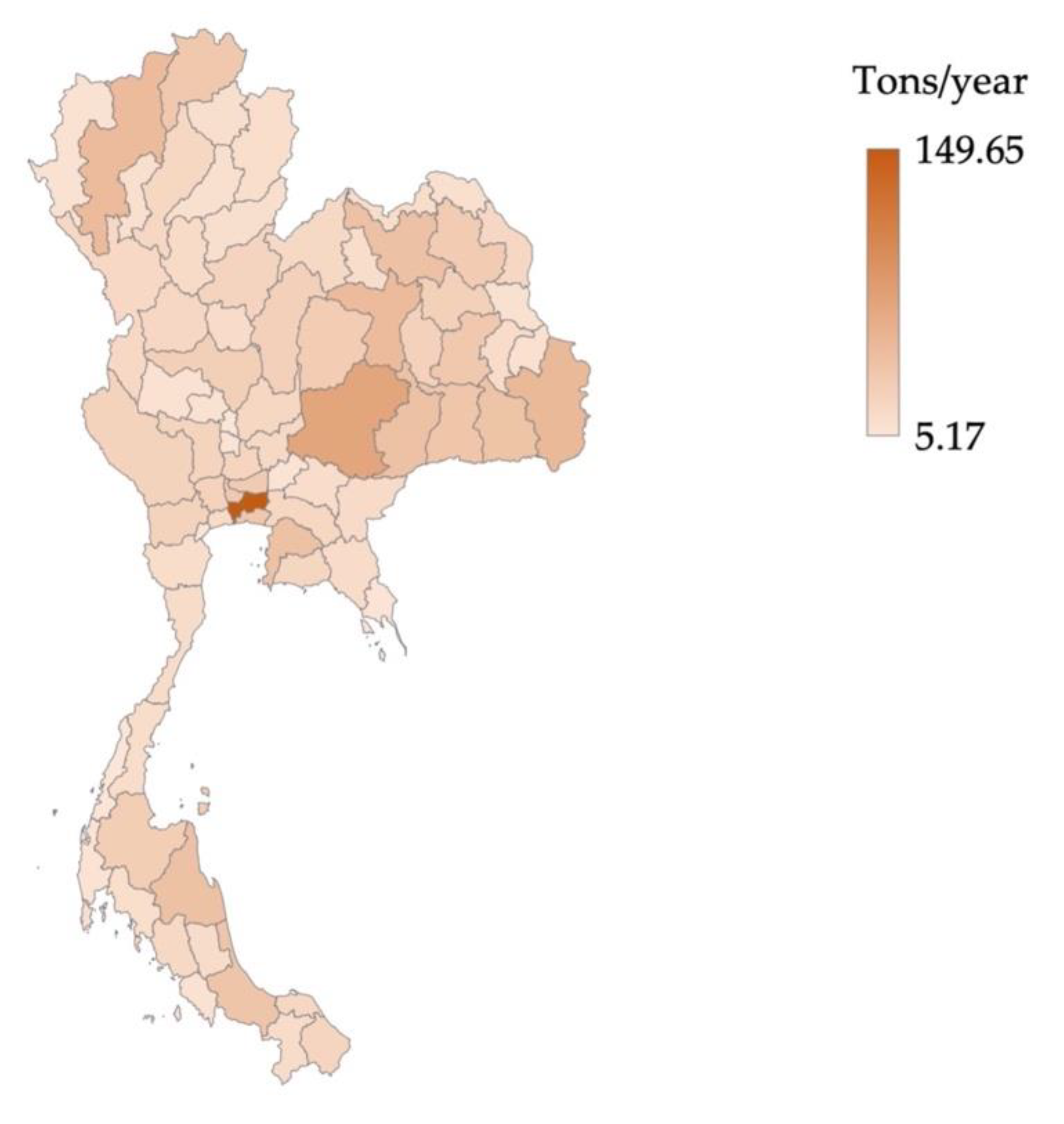

| Mineral | Element | Symbol | Metal Concentration (mg/kg of PCBs) | Reference | ||
|---|---|---|---|---|---|---|
| Range | Average Value | |||||
| Iron and ferroalloys | Cobalt | Co | 211–1000 | 591 | [19,20,21,50] | |
| Iron | Fe | 6600–150,000 | 34,366 | [19,20,21,34,50,55,56] | ||
| Manganese | Mn | 1832 | 1832 | [19] | ||
| Molybdenite | Mo | 72 | 72 | [19] | ||
| Nickel | Ni | 12,240–54,000 | 24,050 | [19,20,21,34,55,56] | ||
| Base metals | Aluminum | Al | 14,069–32,000 | 23,086 | [19,20,21,50] | |
| Antimony | Sb | 760–2779 | 1769 | [19,51] | ||
| Copper | Cu | 66,500–657,400 | 377,327 | [19,20,21,34,50,55,56] | ||
| Tin | Sn | 31,554–52,200 | 42,987 | [20,21,34,50,55,56] | ||
| Zinc | Zn | 2200–41,000 | 14,246 | [19,20,21,50,55] | ||
| Precious metals | Silver | Ag | 194–3800 | 2272 | [19,20,21,23,34,50,55,56] | |
| Gold | Au | 65–1800 | 843 | [19,20,21,23,34,50,55,56,57] | ||
| Rare earth elements (REEs) | Cerium | Ce | 3–81 | 42 | [19,57] | |
| Scandium | Sc | 3–30 | 17 | [19,57] | ||
| Thorium | Th | 495 | 495 | [19] | ||
| Titanium | Ti | 6500–14,319 | 10,410 | [19,34] | ||
| Vanadium | V | 8–16 | 12 | [19,57] | ||
| Zirconium | Zr | 1950 | 1950 | [19] | ||
| Platinum-group metals (PGMs) | Palladium | Pd | 39–300 | 186 | [20,23,50,55] | |
| Platinum | Pt | 2–26 | 14 | [20,56] | ||
| Toxic | Metalloid | Arsenic | As | 40–48 | 44 | [19,57] |
| Metals | Cadmium | Cd | 1–1000 | 335 | [19,21,51] | |
| Chromium | Cr | 1100–14,000 | 4092 | [19,20,21,34,51] | ||
| Lead | Pb | 1900–24,000 | 13,151 | [19,20,21,34,50,55,56] | ||
| Year | Approximation 2 | Time Step | Simple Delay | Average DMPs Generation | ||
|---|---|---|---|---|---|---|
| L = 2 Years | L = 3 Years | L = 4 Years | ||||
| 2012 | 21.41 | 13.85 | 17.80 | 12.81 | 13.96 | 15.97 |
| 2013 | 24.65 | 16.72 | 20.16 | 17.80 | 12.81 | 18.43 |
| 2014 | 25.90 | 21.74 | 21.41 | 20.16 | 17.80 | 21.40 |
| 2015 | 26.28 | 20.44 | 24.65 | 21.41 | 20.16 | 22.59 |
| 2016 | 28.69 | 11.96 | 25.90 | 24.65 | 21.41 | 22.52 |
| 2017 | 17.44 | 15.58 | 26.28 | 25.90 | 24.65 | 21.97 |
| 2018 | 12.79 | 9.33 | 28.69 | 26.28 | 25.90 | 20.60 |
| 2019 | 17.40 | 12.78 | 17.44 | 28.69 | 26.28 | 20.52 |
| 2020 | 15.37 | 28.96 | 12.79 | 17.44 | 28.69 | 20.65 |
| 2021 | 19.18 | 14.62 | 17.40 | 12.79 | 17.44 | 16.29 |
| Mineral | Element | Symbol | Average Concentration of Metal in PCBs (kg/ton of PCBs) | Metal Content (tons) | |
|---|---|---|---|---|---|
| Iron and ferroalloys | Cobalt | Co | 0.59 | 0.24 | |
| Iron | Fe | 34.37 | 14.16 | ||
| Manganese | Mn | 1.83 | 0.75 | ||
| Molybdenite | Mo | 0.07 | 0.03 | ||
| Nickel | Ni | 24.05 | 9.91 | ||
| Base metals | Aluminum | Al | 23.09 | 9.51 | |
| Antimony | Sb | 1.77 | 0.73 | ||
| Copper | Cu | 377.33 | 155.47 | ||
| Tin | Sn | 42.99 | 17.71 | ||
| Zinc | Zn | 14.25 | 5.87 | ||
| Precious metals | Silver | Ag | 2.27 | 0.94 | |
| Gold | Au | 0.84 | 0.35 | ||
| Rare earth elements (REEs) | Cerium | Ce | 0.042 | 0.017 | |
| Scandium | Sc | 0.017 | 0.007 | ||
| Thorium | Th | 0.49 | 0.204 | ||
| Titanium | Ti | 10.41 | 4.29 | ||
| Vanadium | V | 0.012 | 0.005 | ||
| Zirconium | Zr | 1.95 | 0.80 | ||
| Platinum-group metals (PGMs) | Palladium | Pd | 0.19 | 0.76 | |
| Platinum | Pt | 0.014 | 0.006 | ||
| Toxic | Metalloid | Arsenic | As | 0.044 | 0.018 |
| Metals | Cadmium | Cd | 0.33 | 0.13 | |
| Chromium | Cr | 4.09 | 1.69 | ||
| Lead | Pb | 13.15 | 5.42 | ||
Publisher’s Note: MDPI stays neutral with regard to jurisdictional claims in published maps and institutional affiliations. |
© 2022 by the authors. Licensee MDPI, Basel, Switzerland. This article is an open access article distributed under the terms and conditions of the Creative Commons Attribution (CC BY) license (https://creativecommons.org/licenses/by/4.0/).
Share and Cite
Budnard, J.; Khaodhiar, S. Estimating the Generation of Discarded Mobile Phones and Highlighting Areas for Recycling Precious Metals from Printed Circuit Boards in Thailand. Sustainability 2022, 14, 17025. https://doi.org/10.3390/su142417025
Budnard J, Khaodhiar S. Estimating the Generation of Discarded Mobile Phones and Highlighting Areas for Recycling Precious Metals from Printed Circuit Boards in Thailand. Sustainability. 2022; 14(24):17025. https://doi.org/10.3390/su142417025
Chicago/Turabian StyleBudnard, Jariya, and Sutha Khaodhiar. 2022. "Estimating the Generation of Discarded Mobile Phones and Highlighting Areas for Recycling Precious Metals from Printed Circuit Boards in Thailand" Sustainability 14, no. 24: 17025. https://doi.org/10.3390/su142417025
APA StyleBudnard, J., & Khaodhiar, S. (2022). Estimating the Generation of Discarded Mobile Phones and Highlighting Areas for Recycling Precious Metals from Printed Circuit Boards in Thailand. Sustainability, 14(24), 17025. https://doi.org/10.3390/su142417025







